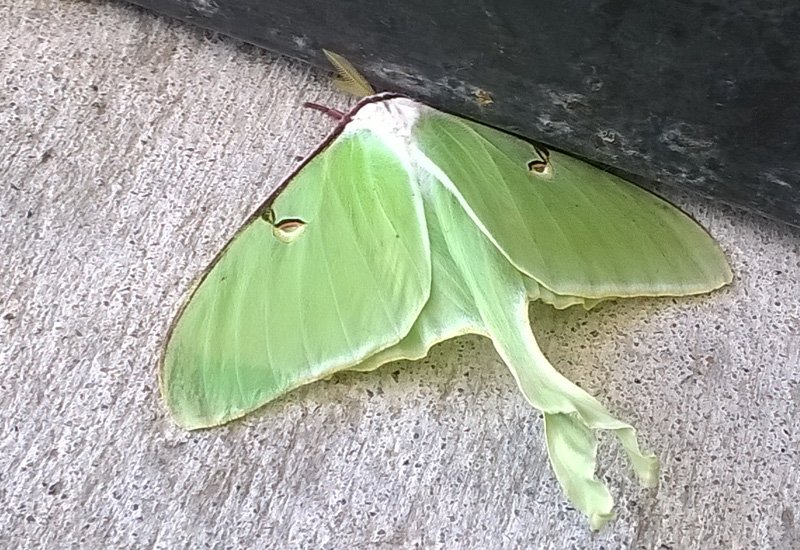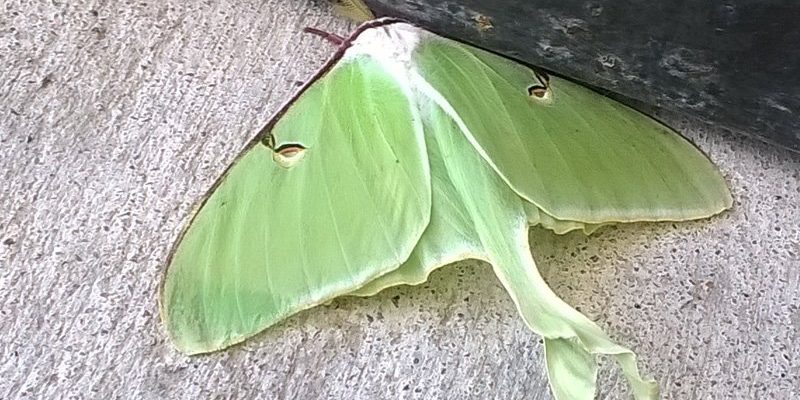
So, what’s out there that could harm these stunning moths? Think of it like a tightly woven web of life where every thread interacts. The Luna moth is a vital part of that web, and understanding its predators helps illuminate the broader ecosystem. Let’s dive into the fascinating—and often dangerous—world that these moths inhabit.
Natural Predators of the Luna Moth
Luna moths, while beautiful, aren’t exempt from the eyes of hungry predators. Many animals find these moths a delightful snack. Birds, frogs, and even some large insects target them, especially when they’re in their vulnerable adult stage.
- Birds: Certain birds, like owls and bats, are nighttime hunters that have excellent night vision. They rely on the fluttering movements of moths, honing in on their targets with practiced precision.
- Reptiles: Lizards and snakes are also common predators. They often wait quietly in the shadows, ready to pounce when a Luna moth inadvertently flits too close.
- Insects: Larger insects, such as mantises and certain wasps, may also prey on Luna moths. They can be deceptively quick, catching moths off guard with their speed.
Here’s the thing—these predators are an essential part of the ecosystem. They help keep the Luna moth population in check, ensuring a balance in nature. Still, it’s a delicate dance between survival and extinction.
Environmental Threats to the Luna Moth
Beyond direct predation, environmental factors pose significant threats to Luna moths. As with many species, their habitats are changing, and not always for the better. You might be wondering, “What could possibly threaten such a resilient creature?” Here are a few key factors:
- Habitat Loss: As forests and wild areas are replaced by urban development or agriculture, Luna moths lose their breeding grounds. These open spaces are crucial for them to reproduce and thrive.
- Pollution: Pesticides and other chemicals can have harmful effects on Luna moths. When these chemicals seep into their environment, they can disrupt their life cycle, leading to lower populations.
- Climate Change: Changing temperatures and weather patterns can affect the availability of food sources for Luna moths and disrupt their reproductive cycles. For example, a warmer spring might cause them to emerge too early, leaving them vulnerable to late frosts.
Understanding these environmental threats gives us insight into how fragile ecosystems can be. Protecting their habitat is crucial for the survival of Luna moths and many other species.
Impact of Light Pollution
You might be surprised to learn that something as seemingly benign as light can hinder the survival of Luna moths. Light pollution is a growing problem for many nocturnal creatures, and Luna moths are no exception.
Many moth species are attracted to artificial lights, which can lead them away from their natural habitats. This diversion can be deadly, as they might find themselves exposed to predators or unfavorable environments.
Moreover, the confusion caused by lights might disrupt their mating behaviors. Luna moths rely on pheromones to attract mates, and bright lights can interfere with this communication.
Here’s an analogy: imagine trying to call a friend over the sound of a loud concert. You might get drowned out, and your friend wouldn’t know where to find you. That’s similar to what Luna moths experience with artificial light!
Human Activity and Its Consequences
Humans are a significant force affecting many wildlife populations, including Luna moths. Activities such as logging, urban development, and pesticide application directly impact their survival.
When forests are cleared for logging or housing, Luna moths lose the trees they need for laying eggs and shelter. Even small-scale gardening activities can introduce harmful chemicals into their habitats.
You might think, “What can I do about this?” Simple actions can make a difference, like creating a moth-friendly garden by planting native species or minimizing pesticide use. Little by little, even small actions can help maintain stable populations of these enchanting insects.
Conservation Efforts for Luna Moths
With all these challenges stacked against them, conservation efforts have become more crucial than ever. Several organizations are working tirelessly to protect Luna moths and their habitats.
Programs focused on habitat restoration aim to replant native trees and restore areas where Luna moths can thrive. Additionally, educational campaigns help raise awareness about the importance of moths in our ecosystems.
You might be wondering how you can help. Participating in local conservation programs, spreading awareness, and even simply enjoying nature can have longevity effects. Every little bit counts!
What Can You Do to Help Luna Moths?
Feeling inspired to help Luna moths? You don’t need to be a scientist or a conservationist to make a difference! Here are a few simple steps you can take:
- Create a Butterfly and Moth Garden: Include local flora that attracts moths, providing them with both food and shelter.
- Reduce Light Pollution: Use dim lights or turn off unnecessary outdoor lighting during peak moth activity times.
- Advocate for Clean Practices: Support local legislation that protects natural habitats and promotes eco-friendly practices.
By making these changes, you can contribute to a safer environment for Luna moths and other wildlife.
The Luna moth is more than just a pretty face; it’s a vital part of our ecosystem. Understanding the various predators and threats to the Luna moth, from natural predators to environmental hazards, helps shed light on the intricacies of nature. While they may seem insignificant in the grand scheme of things, each creature plays a role in keeping our environment balanced.
The next time you spot a Luna moth, take a moment to appreciate its beauty—and remember the challenges it faces. By staying informed and making proactive choices, we can all support these magnificent creatures and help ensure their future for generations to come.

